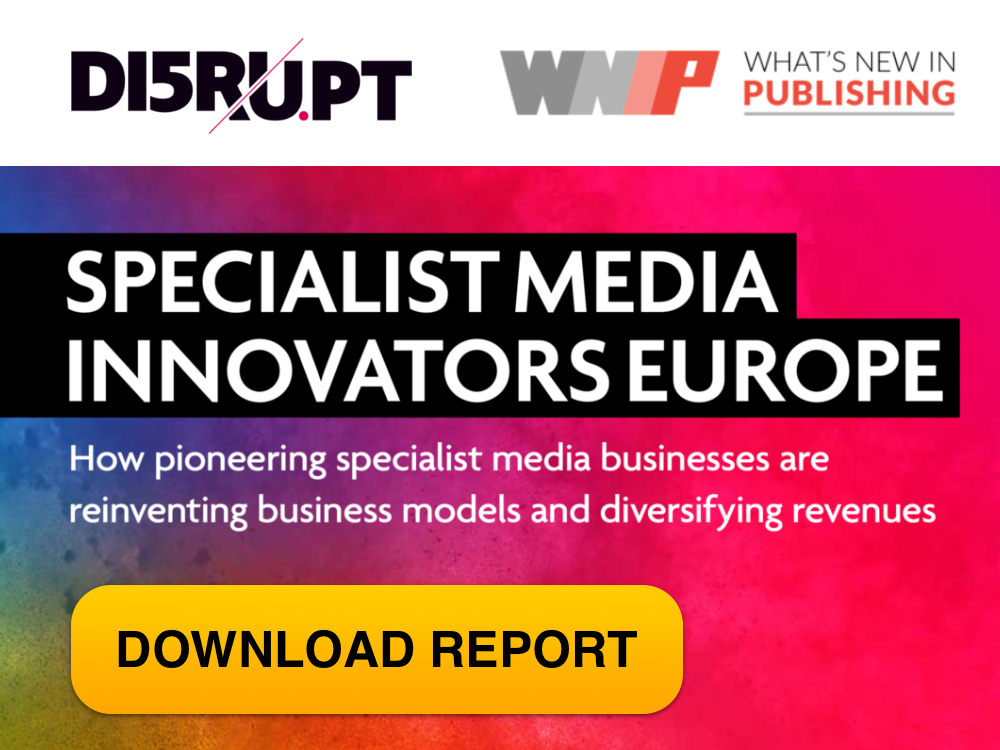|
Getting your Trinity Audio player ready...
|
After a rocky 2018, the big tech companies spent much of 2019 once again vying for publishers’ attention. But with publisher trust at an all-time low, will new initiatives get enough buy-in to work? Esther Kezia Thorpe takes a look as part of our Media Moments 2019 report.
Platforms have barely been out of the headlines in 2019. Whether it’s heated debates about political advertising, continued issues with the proliferation of fake news, or trying to set up a new global financial system, the impacts of the decisions the tech giants make continue to significantly impact the media ecosystem.
As with last year’s analysis, this chapter will focus on the key developments which have affected publishers, rather than the wider regulatory and political debates which the major platforms have been caught up with throughout 2019.
Facebook, Messenger, Instagram and WhatsApp have had a bumpy ride this year, and appear to be working frantically to integrate these properties under the Facebook (now FACEBOOK) umbrella before regulators can break them up.
When it comes to their relationship with publishers, this year has been a stark contrast to 2018. Facebook may not have reversed its devastating algorithm changes, but it has made efforts to repair its relationship with the publishing industry this year. There have been two notable launches; the rollout of subscriptions in Instant Articles, and a dedicated News Tab.
Let’s start with Instant Articles Subscriptions. The platform has been testing the feature for over 18 months, but in June, they announced that they were rolling it out to ‘all eligible publishers’ worldwide. In practice, it means that publishers can define when a reader sees a paywall in Instant Articles, depending on their own model. A range of subscription models are supported, from metered paywalls to ‘freemium’ models.
There are pros and cons to the tool. It has a number of options to help convert subscribers, from welcome screens to dedicated publisher content feeds, which have increased the articles read by subscribers on Facebook by 40%. But Facebook are the ones ‘owning’ and processing those subscribers, meaning that users remain in the ecosystem without ever having to visit the publisher’s site at all.
October saw the launch of Facebook’s new News Tab in the US, a ‘dedicated place for news on Facebook’. If that sounds familiar, that’s because the company tested something similar last year, which resulted in a fake news boost and decimating referral traffic in Slovakia, Sri Lanka, Cambodia, and other countries where it was tested.
Facebook News will appear as a dedicated tab, featuring a range of content across general, topical, diverse and local news. Content will come from publishers who abide by Facebook’s Publisher Guidelines and who meet certain quality and integrity standards. Many were surprised to see notorious alt-right site Breitbart included in this list of ‘high quality’ publishers at launch.
Another controversial point was Facebook’s decision to pay only some publishers for featuring content in News. Some publishers will be paid between $1m and $3m a year to ‘license’ the content, including the New York Times, the Washington Post, Buzzfeed, ABC News and more. But everyone else is left with nothing, with media outlets like Reuters and Associated Press not receiving a penny.
At the time of writing, Facebook News is still in a test phase in the US, with no fixed timeline for rollout elsewhere. It is very likely that the tech giant will be pressured into supporting a fairer payment system for publishers early next year. But it is just as likely that handouts of millions of dollars isn’t part of the long-term plan.
The question with both of these products is, is it simply too little too late for publishers? Opinions vary on this. While we’re unlikely to see brands go all-in on any new initiatives from the platform, 7 out of 10 publishers still believe that Facebook provides the greatest reach for content compared to other social platforms.
The one to watch in 2020 will be Facebook Pay. The service, which lets users pay other people and businesses across Facebook’s properties, launched in November and could well pave the way to reader-publisher transactions in Newsfeed and more.
When it comes to Facebook’s other properties, there have been few significant updates that directly affect publishers.
WhatsApp is worth a brief mention. A number of publishers were experimenting with sending newsletter-style bulletins through the messaging app. But in an attempt to stop the rapid spread of misinformation, WhatsApp announced in June that as of December, they will no longer be allowing publishers to send out ‘automated or bulk messaging’.
The FT was one prominent publisher to close their WhatsApp group in September following the decision, and expressed their disappointment as the platform was showing early signs of being a ‘huge success’. A number of German publishers were also concerned, particularly inFranken.de who had been sending newsletters to WhatsApp users since 2014 with such success that they had discontinued their email newsletters.
Instagram has seen little in the way of significant announcements this year. Following the launch of IGTV late last year, a number of publishers have been experimenting with the TV format, with growth being ‘steady but unspectacular’. If Facebook’s News tab rollout performs well, they may begin to turn their attention properly to publishers on Instagram. But there are no plans yet.
Google have grabbed almost as many headlines as Facebook when it comes to clashes with the publishing industry this year. The most notable fight, which is still ongoing, is the pay-for-snippets dispute which saw Google go head to head with French publishers in October.
This began with the passing of the European Copyright Directive earlier in the year. The most controversial parts of the law require large platforms like Facebook and Google to pay a ‘link tax’ when they use small snippets of publisher content, such as displaying a headline and subhead in search results.
France became the first country to translate the Directive into national law, which came into force in October. However, in September Google declared that it would block any results from European newspapers in France, and leave search pages blank. The threat would subsequently apply to other countries looking to adopt the same law.
When the law came into effect on October 25th, the French opted for a tactical retreat, fearing huge drops in click-through rates to publisher sites. Instead, French media have filed a formal complaint to the French antitrust body, arguing that Google had put them in an impossible position, and is a ‘text-book case of abuse of dominant position’.
The arguments around whether Google should or should not pay a link tax are complex, and there isn’t space to deal with them here. Publishers should certainly not be under the illusion that a link tax would solve all revenue issues; indeed, studies have suggested revenue would be negligible.
But it will certainly be a case of ‘the unstoppable force meets the immovable object’ as 2020 gets underway. No matter how many European publishers adopt this legislation, Google wields enormous power, and can choose to simply not comply.
The other update worth mentioning is from September, when Google said they would move to prioritise original reporting in search. One criticism of the search engine is that publishers with better SEO could essentially copy stories and divert all the traffic from those who had originally reported it. The new global search algorithm aims to “highlight articles that we identify as significant original reporting,” and to keep such articles in top positions for longer.
Apple
The key launch for Apple regarding publishers this year has been Apple News+, a paid version of its hugely popular aggregator app Apple News. When plans were announced for the $9.99 a month service in February, publishers were outraged at the proposal that Apple would keep half of all revenues generated, distributing the rest among individual publishers depending on how much time had been spent on their content.
Despite the fury from the industry, the service signed on some impressive titles for its March launch, with the Wall Street Journal, The Los Angeles Times and the National Geographic Magazine joining a host of Condé Nast brands and over 300 other publishers.
But just a few months later, reports emerged that the app was struggling both with publishers and users, and had gone back to the drawing board, requesting retrospective input from publishing executives. Users are allegedly confused about the difference between free articles in Apple News, and the new paid content in Apple News+.
Apple News+ is being seen as something of a testbed for whether a wider audience will pay for an article aggregator in the same way they pay for films and music. The initial signs aren’t looking great; after signing on 200,000 subscribers with a free trial in the first month, that number hasn’t really grown.
But a bigger concern as 2020 approaches is the rumours circulating about Apple’s plans for a content ‘bundle’. This would include Apple New+, Apple TV+ and Apple Music, and could be introduced within months. This would inevitably mean a smaller slice of the pie for publishers involved.
Snapchat
Snapchat has had a much better year this year. User numbers have recovered after plummeting last year, with the platform now showing a 13% year-on-year increase to 210 million daily active users, thanks in no small part to a release of baby and gender swap filters in May.
There have been few significant alterations to Snapchat this year for publishers. But both early adopters and relative newcomers to Snapchat Discover are finding it profitable, with Whistle, Group Nine and Hearst all seeing ‘notable increases’ in revenue. Most of this is driven by ad revenue sharing, with a 50-50 split between the platform and the publisher as standard.
Emerging platforms
Two platforms deserve a mention, perhaps less for practical reasons as for the sheer amount of hype generated this year. Social video platform TikTok has emerged as the hot app of 2019, amassing over half a billion active users worldwide.
Because the platform is so new, publishers are still at the early stages of experimentation on it. The Washington Post has been an early adopter, and in November, VICE launched a dedicated TikTok account for its Munchies brand. It will be interesting in 2020 to see whether, like Snapchat, TikTok turns into a viable commercial opportunity for publishers.
Finally, streaming platform Twitch – most popularly known for gaming and eSports – is emerging as a surprising money-maker. Some publishers have been making use of Twitch’s direct monetisation options, including in-stream ads, subscriptions, and micropayments.
Again, the Washington Post is trialling live broadcasts and replays on the platform. Phoebe Connelly, the Deputy Director of Video, has said that Twitch’s clear pathways to monetisation make it more appealing than other platforms.
But as with all these different types of platform, it’s not about TikTok vs Twitch. Twitch is much more focused on long-form video, Instagram on mid-length, and TikTok on extremely short-form. 2020 will be about leveraging these platforms in a way that makes most sense – and money – for publishers.
To read more from this chapter, including case studies, download the full Media Moments 2019 report.



